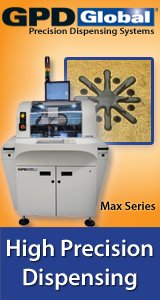Printed Circuit Board Assembly & PCB Design Forum
SMT electronics assembly manufacturing forum.
- SMTnet
- »
- Electronics Forum
- »
- wave soldering + header connector assembling problem
wave soldering + header connector assembling problem
Views: 7715
![]() We have a problem with soldering of a 96 pin header connecto...
- Nov 05, 2007
by
omid_juve
We have a problem with soldering of a 96 pin header connecto...
- Nov 05, 2007
by
omid_juve
![]()
![]()
![]() Call me jaded, but this sounds suspiciously like the classic...
- Nov 05, 2007
by
Steve Thomas
Call me jaded, but this sounds suspiciously like the classic...
- Nov 05, 2007
by
Steve Thomas
![]()
![]()
![]() That's where this website falls short. Sorry to b*tch, but ...
- Nov 05, 2007
by
Dirk Nuendyke
That's where this website falls short. Sorry to b*tch, but ...
- Nov 05, 2007
by
Dirk Nuendyke
![]()
![]()
![]() Maybe the "other" company runs a different wave, or flux, or...
- Nov 05, 2007
by
Hussman
Maybe the "other" company runs a different wave, or flux, or...
- Nov 05, 2007
by
Hussman
![]()
![]()
![]() please download the picture from the link below .
we have t...
- Nov 08, 2007
by
omid_juve
please download the picture from the link below .
we have t...
- Nov 08, 2007
by
omid_juve
![]()
![]()
![]() please download the picture from the link below .
we have ...
- Nov 08, 2007
by
omid_juve
please download the picture from the link below .
we have ...
- Nov 08, 2007
by
omid_juve
![]()
![]()
![]() Hi,
I have just taken a look at the Connector Images.
...
- Nov 08, 2007
by
aj
Hi,
I have just taken a look at the Connector Images.
...
- Nov 08, 2007
by
aj
![]()
![]()
![]() Where are the shorts occurring on the 96 pin connector? Are...
- Nov 08, 2007
by
robgd3
Where are the shorts occurring on the 96 pin connector? Are...
- Nov 08, 2007
by
robgd3
![]()
![]()
![]() Annular rings are too big, it is acceptable to have shorts o...
- Nov 08, 2007
by
RDR
Annular rings are too big, it is acceptable to have shorts o...
- Nov 08, 2007
by
RDR
![]()
![]()
![]() We've got lots of connectors at my place of employment like ...
- Nov 08, 2007
by
Dirk Nuendyke
We've got lots of connectors at my place of employment like ...
- Nov 08, 2007
by
Dirk Nuendyke
![]()
![]()
![]() how about applying solder resist on the area where you have ...
- Nov 09, 2007
by
Reypal
how about applying solder resist on the area where you have ...
- Nov 09, 2007
by
Reypal
![]()
![]()
![]() You're joking rite? I mean the pitch between these two conn...
- Nov 09, 2007
by
Hussman
You're joking rite? I mean the pitch between these two conn...
- Nov 09, 2007
by
Hussman
![]()
- SMTnet
- »
- Electronics Forum
- »
- wave soldering + header connector assembling problem






